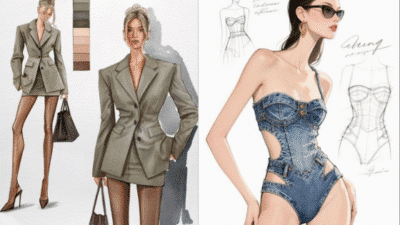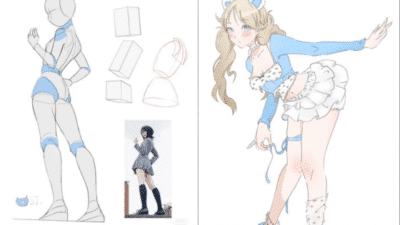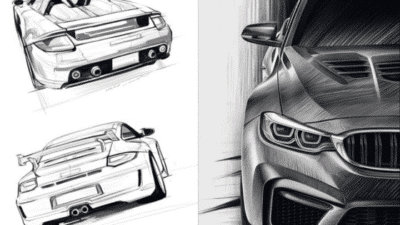Fashion design drawings are the foundation for turning creative clothing ideas into reality. These sketches help you clearly visualize your designs, experiment with different looks, and communicate your ideas with others in the fashion world. Whether you’re just starting out or looking to sharpen your skills, understanding how to create effective fashion sketches is an essential step in your design journey.
From grasping the basics of figure proportions to using the right tools, fashion illustration combines technique and imagination. Each drawing tells its own story, capturing fabric movement and design details so others can see your vision. If you’re eager to bring your designs to life on paper, this guide will walk you through the process and inspire your next project.
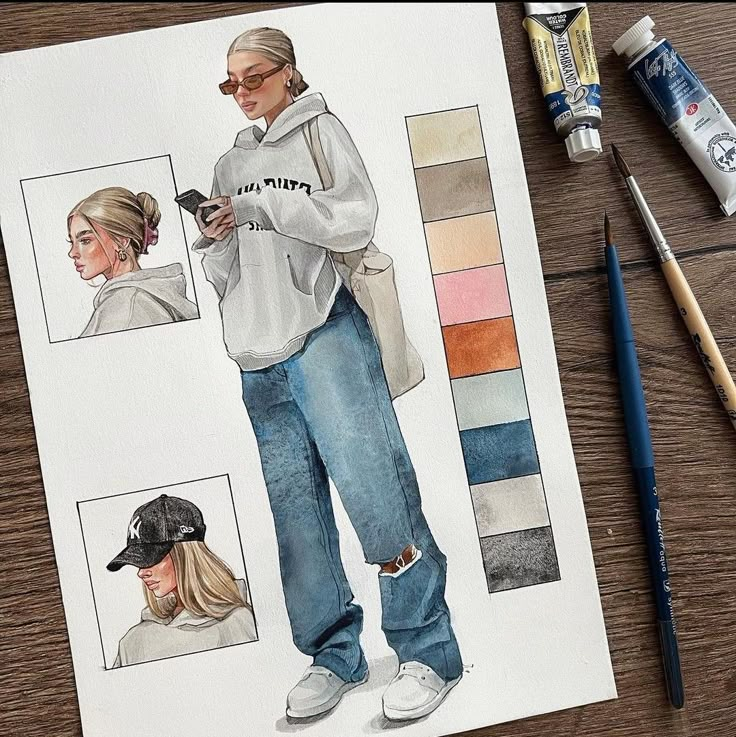
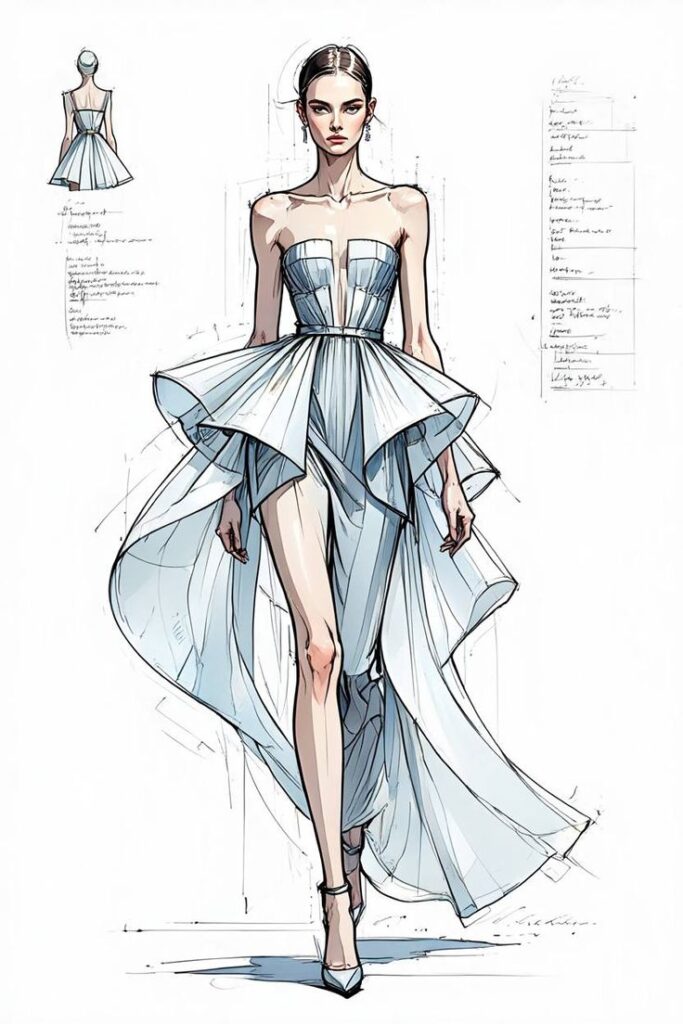
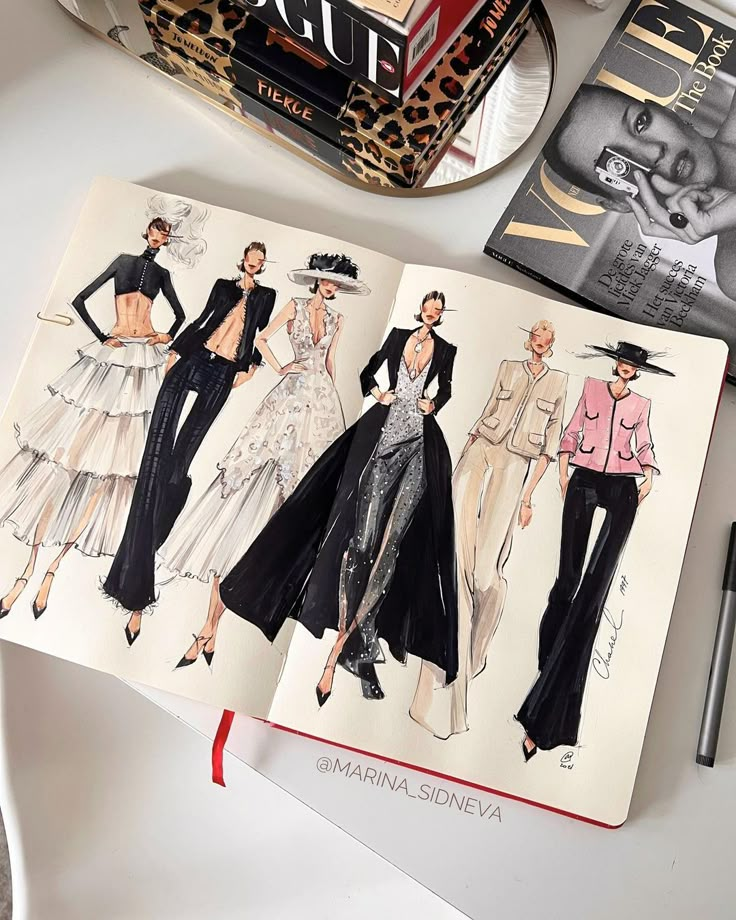
Key Takeaways
- Fashion sketches are essential for communicating design ideas.
- The right tools and techniques help you create clear and effective drawings.
- Mastering basic sketching skills turns your concepts into finished designs.
Understanding Fashion Design Drawings
Fashion design drawings allow you to translate your creative ideas into visual forms that can be developed into real garments. These illustrations act as a universal language among designers, pattern makers, and manufacturers, helping ensure every detail is understood and executed as planned.
What Are Fashion Design Drawings
Fashion design drawings are visual representations of your garment concepts. You use these sketches to showcase shapes, details, and style elements in a clear way before any actual sewing starts.
There are several types, including quick sketches (croquis) that capture pose and proportion, technical flats for construction details, and full-color illustrations highlighting fabrics and textures. Most sketches focus on the human figure and the clothing’s fit, drape, and silhouette.
Fashion illustration combines art with garment design. It’s not just about beautiful artwork; it’s a tool for communicating exact design intent to a team or client.
Key Terminology in Fashion Drawing
To work confidently with fashion design sketches, you need to know the basic terms:
- Croquis: A quick sketch of the human figure used as a template for drawing garments.
- Flat: A technical, flat-view drawing showing the garment from the front, back, and sometimes side, focusing on construction details.
- Silhouette: The outline or shape of a garment.
- Line Sheet: A collection of flat sketches, often used to present a full collection to buyers.
- Illustration: A more artistic, sometimes stylized representation of a design, often used for presentations and portfolios.
- Texturing: Adding visual cues to represent fabric types and surface finishes.
Knowing these terms makes reading, creating, and discussing fashion drawings much easier.
Purpose and Significance in the Fashion Industry
Fashion drawings are a foundation for communication in the industry. You use them to present ideas to your team, pitch concepts to clients, or explain designs to pattern makers.
For brands, these sketches help build cohesive collections and guide sampling and production. In design schools, mastering these drawings is essential for building portfolios and learning garment construction.
Fashion drawing also speeds up the design process. It minimizes errors by clarifying design intent early, reducing misunderstandings and costly mistakes later. Whether you’re starting a new project or refining an existing concept, accurate fashion drawings drive the process forward.
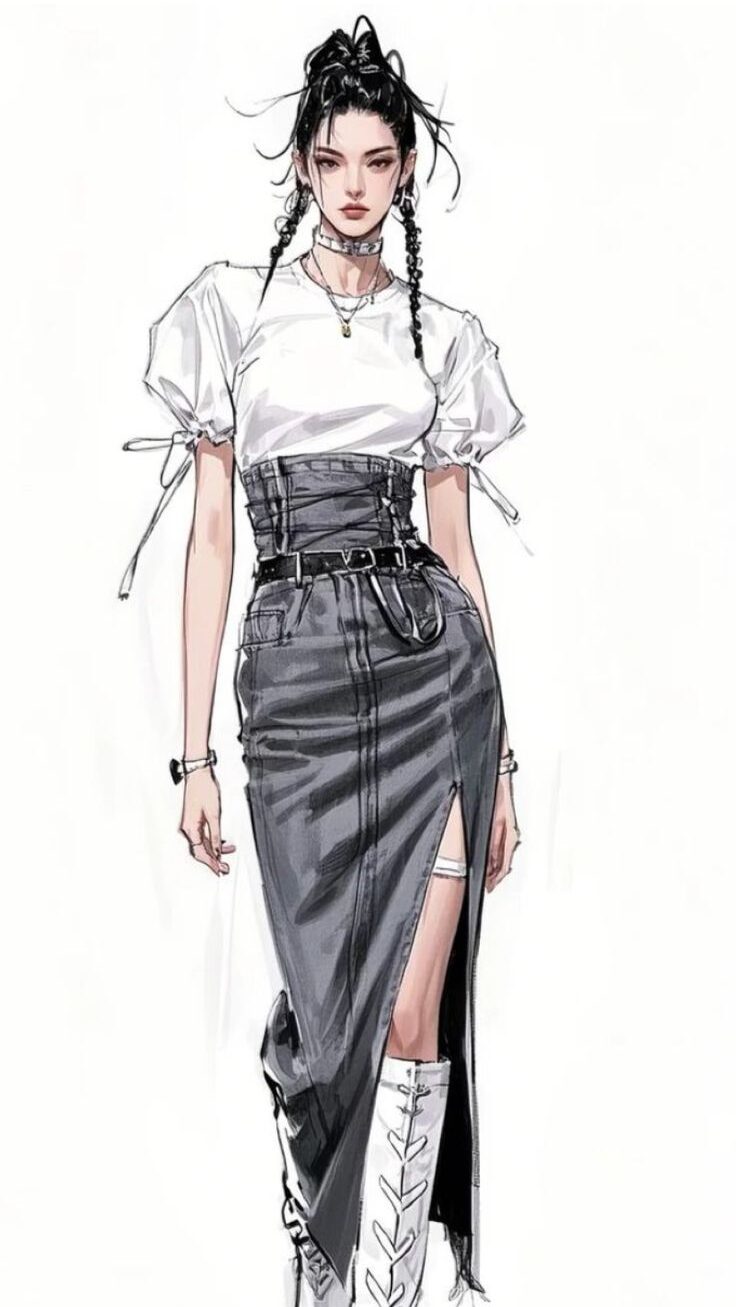
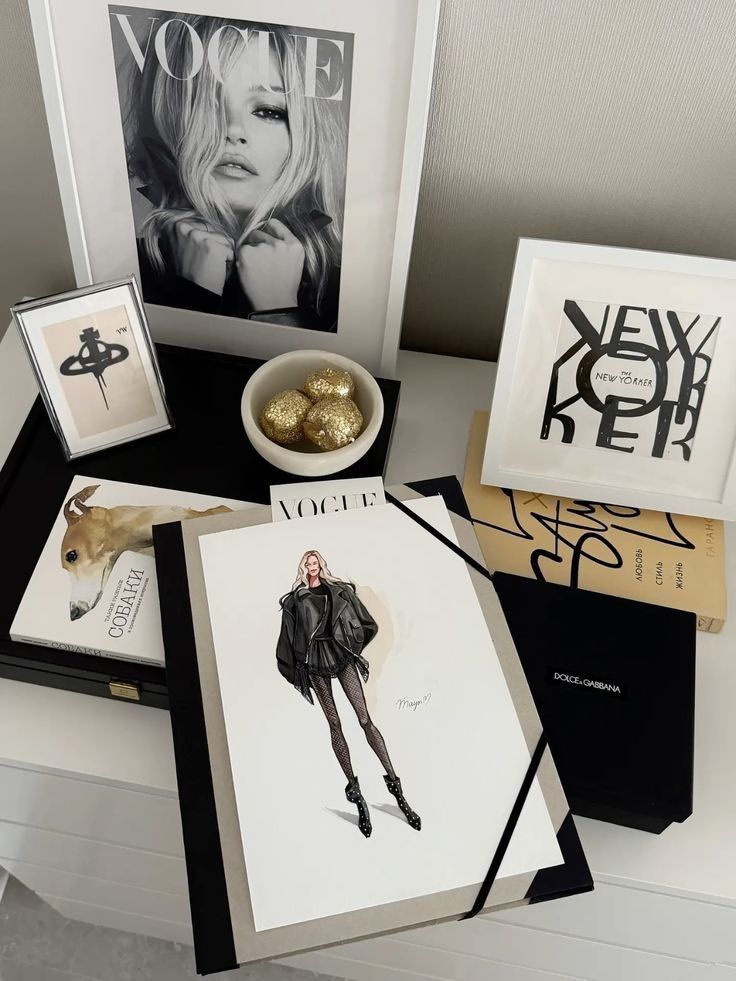
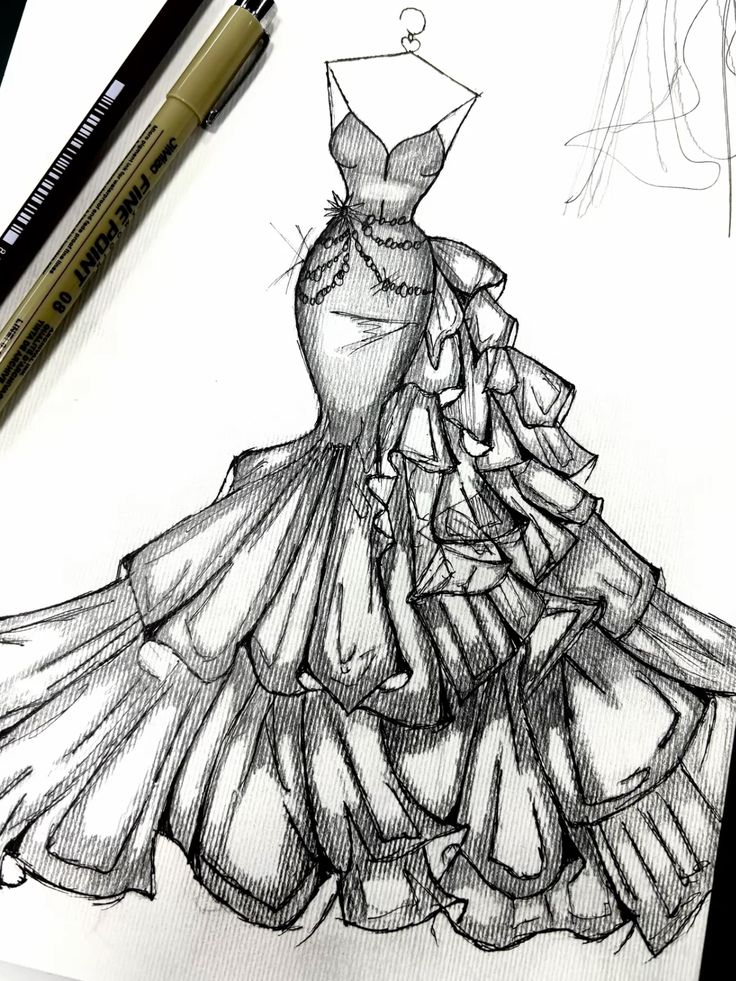
Building Blocks of Fashion Sketches
To build strong fashion sketches, you need a good understanding of the basic foundation, correct proportions, dynamic forms, and essential hand skills. Mastering these elements helps you communicate your design vision clearly and accurately.
The Croquis and Fashion Figure
The croquis is the base template for any fashion illustration. It acts as an outline of the fashion figure, giving you a consistent silhouette to draw clothing on. Most designers work with elongated croquis, typically around 9 heads tall, though you can use different models such as plus-size croquis for variety.
Using a consistent croquis makes your sketches more efficient and uniform. You can print or trace them to speed up the initial sketching process. Making several croquis templates for different poses or body types allows you to represent a wider range of looks.
Tip: Keep your lines light and simple at first so it’s easy to adjust proportions or poses before adding details.
Proportions and Balance Line
Correct proportions ensure your sketches look natural and visually appealing. In fashion illustration, exaggerating the length of the legs and torso creates a more dramatic effect, but the figure should still feel balanced.
The balance line is a vertical line that runs down the center of the figure. It acts as a guide for positioning the body so that it doesn’t look awkward or off-balance. Always start your sketch with the balance line, then build out the pose using simple shapes.
Here’s a quick reference for proportions in a classic fashion croquis:
| Body Part | Proportion (in “head” units) |
|---|---|
| Head to Chin | 1 |
| Neck to Bust | 1 |
| Bust to Waist | 1 |
| Waist to Hip | 1 |
| Hip to Knee | 2 |
| Knee to Foot | 3 |
Form and Shading Techniques
To make your designs pop, you need to add shape and volume to the clothing on the figure. Start by sketching the garment lightly over your croquis, using curved lines to suggest folds and contours. Show where the fabric hugs the body and where it hangs loose.
Shading adds depth and shows the flow of the fabric. Use soft shading for silk or jersey, and sharper contrasts for stiffer materials. Try cross-hatching or blending, and always observe how light falls on actual clothes. Focus on areas where natural folds and shadows would occur, like under hems, behind knees, or at the waist.
Essential Drawing Skills
Practicing core drawing skills can help you sketch quickly and accurately. Work on drawing clean, confident lines and getting comfortable with a range of pencils or pens. Improving your hand control reduces smudging and makes details sharper.
Study references and practice anatomical sketches to get better at drawing hands, feet, and facial features. Being able to sketch different poses and plus size croquis helps you showcase your fashion ideas for all body types. Set aside time for quick gesture drawing exercises—these increase your speed and boost your confidence.
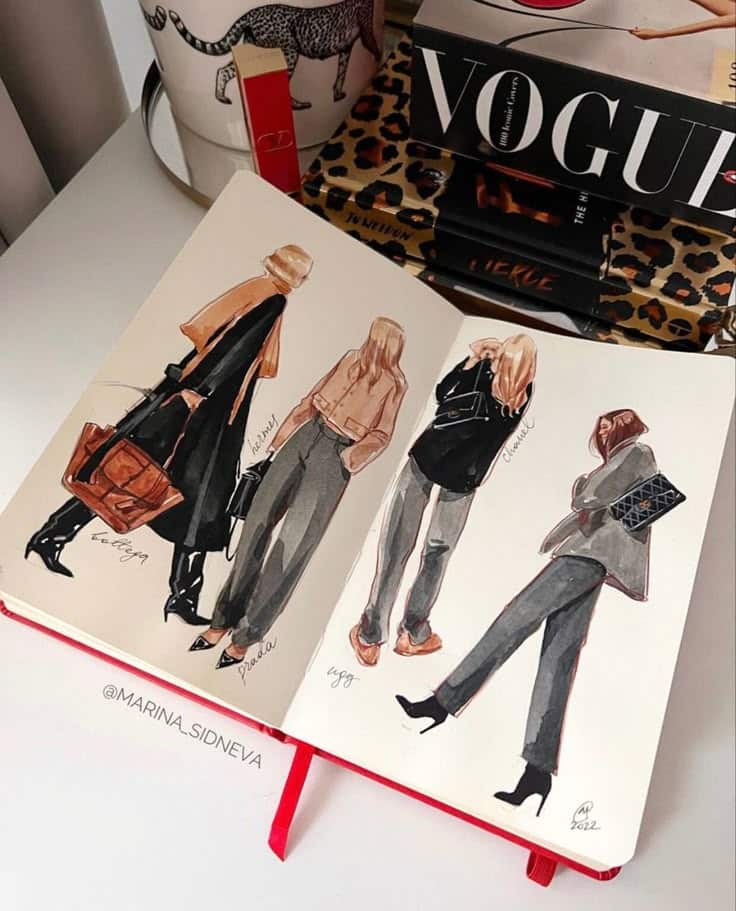
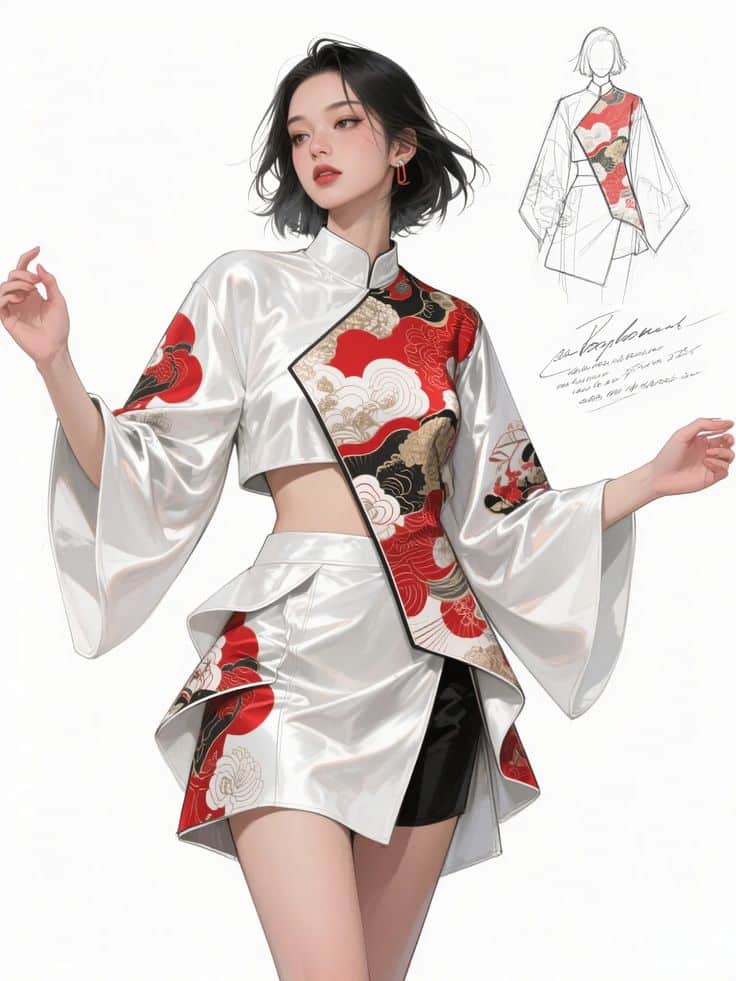
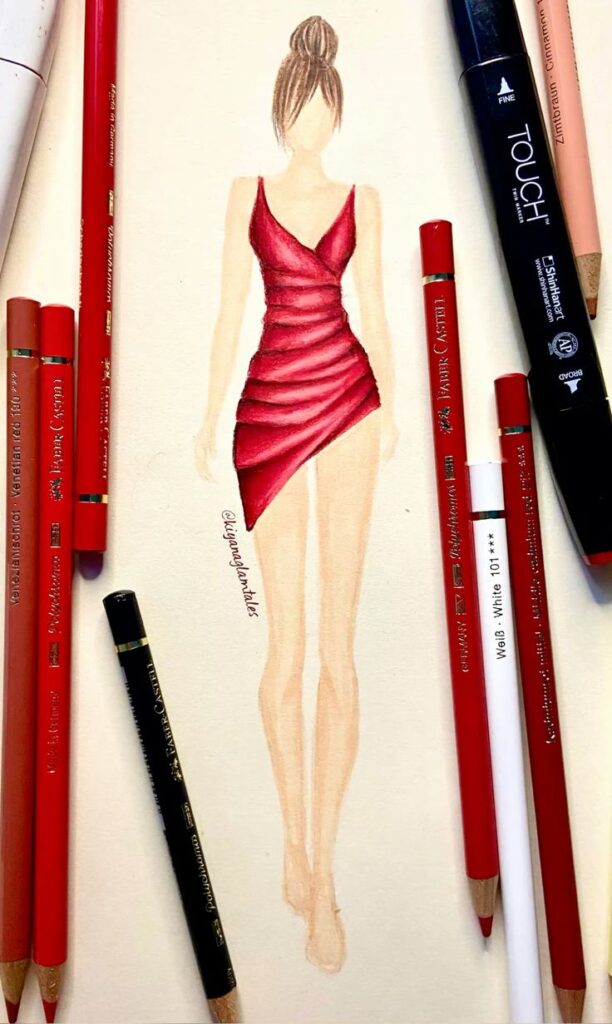
Tools and Techniques for Fashion Illustration
Mastering fashion illustration means choosing the right tools and understanding their unique advantages. Whether you choose traditional sketching, digital platforms, or a blend of both, each method shapes your creative workflow and the look of your designs.
Traditional Versus Digital Methods
When starting fashion sketching, you face a decision between traditional tools and digital methods.
Traditional approaches use pencils, inks, markers, and watercolors. They offer tactile feedback and are great for hand-practicing proportions, creating textures, and experimenting with layering. Sketchbooks let you keep all your works organized in one place, which is useful for tracking progress.
Digital tools offer flexibility when editing designs and trying out new color palettes. Tablets and software, like Adobe Illustrator, allow easy back-and-forth adjustments. They also save time with reusable assets and scalable illustrations.
Here’s a quick comparison:
| Feature | Traditional | Digital |
|---|---|---|
| Flexibility | Medium | High |
| Cost | Low to moderate | Moderate to high |
| Ease of Editing | Low | Very high |
| Portability | High (sketchbook) | High (tablets/laptops) |
Choose the one that aligns best with your process, or combine both to get a broader skill set.
Using Figure Templates and Sketchbooks
Figure templates, also known as croquis, are essential when you want to sketch ideas efficiently.
You can find croquis in various poses and sizes, helping you focus on garment design rather than redrawing bodies each time. By tracing over templates, you consistently maintain correct proportions, saving both time and effort.
Keeping a sketchbook lets you quickly capture ideas wherever inspiration strikes. Use it to experiment with shapes, textures, and garment details. Many designers keep themed sketchbooks for specific projects or trends.
Combine templates and freehand sketches to hone both accuracy and creativity. This habit also makes building a portfolio more straightforward, giving you a rich source of raw and refined sketches.
Introduction to Adobe Illustrator
Adobe Illustrator is a leading tool for digital fashion illustration.
With vector graphics, you can create crisp, scalable drawings perfect for detailed garment shapes, textile prints, and technical flats. The layers system helps you manage each part of an outfit separately, making edits easy.
Key features for fashion design include the Pen Tool for outlining clothes, color libraries for textile matching, and pattern creation for repeating motifs. Illustrator also supports importing figure templates, letting you trace designs accurately before adding colors and textures.
Get familiar with the interface and shortcuts to speed up your workflow. Practice importing sketches and experimenting with brushes to see how digital methods enhance your ideas.
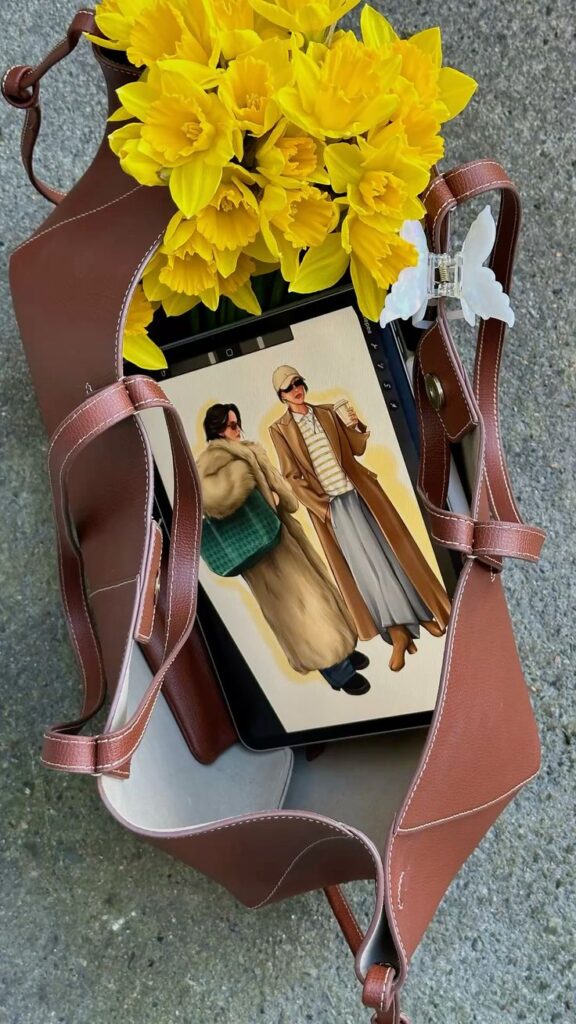
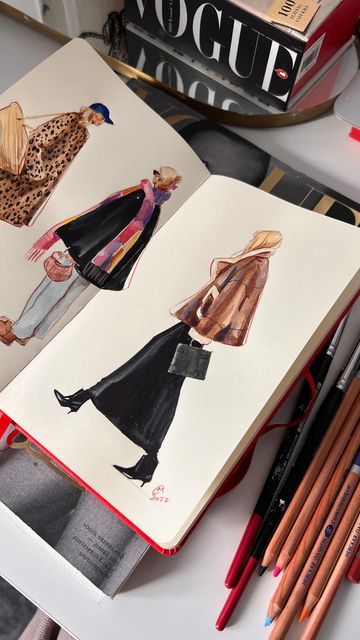
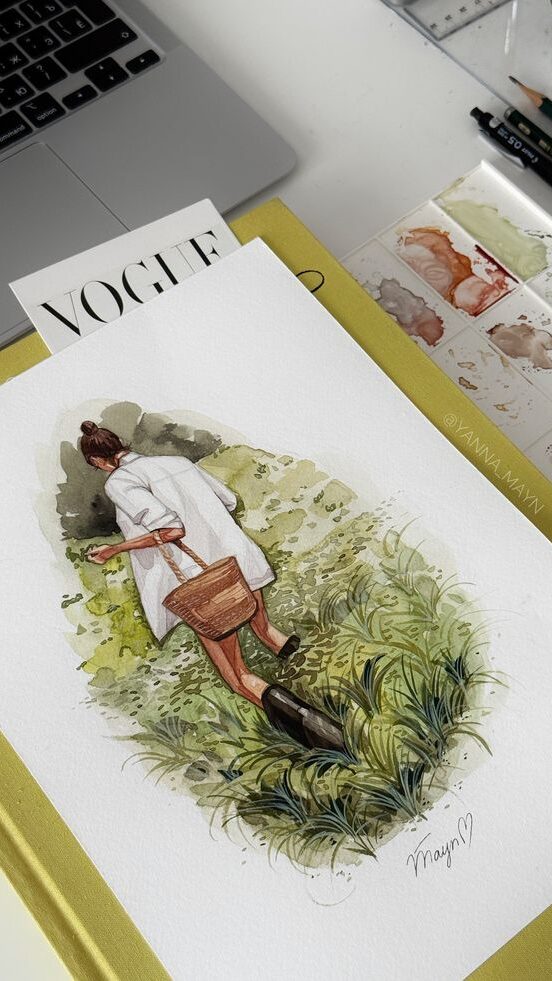
Design Process and Drawing Details
Creating fashion design drawings involves understanding body proportions, using effective sketching techniques, and clearly communicating design details. Paying attention to how you depict fabrics, construction elements, and surface embellishments is essential for accurate and compelling illustrations.
How to Draw Fashion Sketches
Start by creating a croquis, which is a simple outline of the human figure used as a base. Most fashion sketches use elongated proportions, often drawing figures with longer legs and a slimmer frame than real-life bodies. This helps show off the design and silhouette clearly.
Begin with a light pencil sketch to establish the pose and basic form. Use guidelines to mark the head, shoulders, hips, and limbs. Refine your lines, keeping the stance dynamic and natural. Once you have the croquis ready, sketch your garment directly on the figure, focusing on the overall shape before adding details.
Incorporate basic shading with pencils or markers to give your sketch dimension. Consider using a variety of line weights: use bold lines for garment outlines and lighter lines for inner construction or surface details. Finished sketches can be traced with ink or fine liners for clarity.
Depicting Fabrics, Pleats, and Ruffles
Clearly representing different fabrics in your drawing is key to communicating texture and weight. Use soft, curving lines to suggest draping materials like silk or chiffon. For stiffer textiles such as denim, opt for straighter, sharper lines. To make your sketches more realistic, pay attention to the way fabrics fold, bunch, and move around the body.
Pleats and ruffles require careful line work. Depict pleats by drawing evenly spaced lines that converge toward the base, using subtle shading to show depth. For ruffles, use wavy, overlapping lines and highlight the edges with gentle shadows.
Here’s a simple illustration guide:
| Fabric | Line Style | Key Feature |
|---|---|---|
| Silk | Soft, fluid curves | Subtle shine |
| Denim | Firm, straight lines | Stiff structure |
| Ruffles | Wavy, layered lines | Voluminous edges |
| Pleats | Parallel lines | Directional folds |
Highlighting Design Details
Design details set your sketches apart, helping others visualize your creative vision. These include necklines, seams, buttons, pockets, trims, and decorative elements. Clearly outlining these features is important, so use fine lines or small, neat symbols for tiny elements like stitching or embroidery.
Zoom in on tricky details when needed—add a small, separate sketch for complex areas like a pleated sleeve or detailed hem. Use contrast in shading and line width to distinguish main details from the rest of the garment. Layering these visual cues makes your drawings more effective for both development and presentation.
Labeling is also helpful. Add short notes for materials, color ideas, or construction methods so nothing gets lost in translation from sketch to sample. This keeps your design intent clear when collaborating with pattern makers or production teams.
From Sketch to Presentation
Turning your fashion ideas into professional presentations requires distinct skills and organized steps. Each stage helps communicate your design clearly, whether you are pitching concepts, coordinating with manufacturers, or building your personal portfolio.
Flat Fashion Sketches and Fashion CADs
Flat fashion sketches give a clear, technical view of garments. Unlike stylized fashion illustrations, these sketches show accurate proportions and construction details. You use them to outline seams, stitching, trims, and hardware.
Fashion CADs (Computer-Aided Designs) take flats further by adding digital rendering, colors, and fabric textures. CAD programs let you create accurate templates, modify patterns, and visualize different colorways easily. This makes edits and revisions much faster.
Here are key differences:
| Feature | Flat Sketch | Fashion CAD |
|---|---|---|
| Method | Hand-drawn/digital | Software-based |
| Color & Texture | Usually minimal | Full rendering possible |
| Use | Construction info | Manufacturing/marketing |
Both are essential for technical communication with pattern makers and factories.
Creating Line Sheets
Line sheets present your designs as a collection, typically for sales or production teams. A line sheet includes small images of each style, item numbers, color options, size ranges, wholesale prices, and fabric details.
You organize line sheets in a consistent, easy-to-read format. Commonly, designers use tables or grids, so buyers can quickly compare styles and details at a glance.
Components of a typical line sheet:
- Style/Item number
- Flat sketch or CAD image
- Description
- Size range
- Color/fabric options
- Pricing
Line sheets are crucial for selling your apparel designs and for clear communication in the supply chain.
Portfolio and Apparel Design Development
A fashion portfolio is your professional showcase. It displays your development process, final sketches, CADs, and photographed garments. Each project tells a clear story—from early research to finished samples.
You should include high-quality images of your flat sketches and fashion CADs. It helps to add fabric swatches, technical specifications, and process notes to show your thought process and problem-solving skills.
Organize your portfolio to highlight your strongest apparel designs and range. This document shows your abilities to clients, schools, and employers, so keep it updated and relevant to your goals.
Fashion Drawing in Practice
Fashion design drawings are a hands-on process that blends technique and personal creativity. A solid approach helps you capture ideas clearly, while evolving your style helps your work stand out.
Practical Tips for Fashion Designers
When creating fashion sketches, starting with a croquis—a basic model outline—saves time and keeps your proportions consistent. Use light pencil strokes so you can easily adjust shapes as your design develops. Focus on essential lines that express the flow and fit of garments.
Study photos from fashion runways or real clothes to see how fabrics drape and move. This helps your illustrations reflect how the designs might look in real life. Quick gesture sketching can build your confidence and help you capture energy in your work.
Try these key points for effective fashion illustrations:
| Tip | Benefit |
|---|---|
| Use templates | Consistency |
| Practice regularly | Skill improvement |
| Redraw designs | Discover options |
| Analyze fabrics | Realistic looks |
Reference sketches and redraw them in new poses. Don’t expect immediate perfection; building a skillset takes steady practice.
Evolving Your Own Style
Developing your style as a fashion designer involves observing a variety of artists and experimenting with techniques. Notice which lines, details, or colors consistently appear in your sketches. These small choices define your visual identity as you progress.
Try mixing different mediums, like markers, colored pencils, or digital tools. Each material brings out different qualities in your fashion illustrations. Changing up your tools and materials can spark new ideas and approaches.
As you sketch more, look back at your work to spot patterns in your themes or methods. Keep an inspiration folder of your favorite designs, plus sketches you admire from other designers. Over time, your unique approach will become clearer, making your fashion sketches stand out.
- 751shares
- Facebook0
- Pinterest751
- Twitter0
